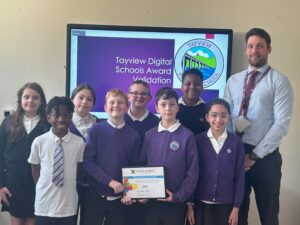
How Carnwath Primary Became Scotland’s Digital Learning Trailblazer
We’re delighted to welcome Sharon Alexander, Principal Teacher at Carnwath Primary School -the first school in Scotland to achieve all four prestigious digital accolades: Digital Schools Award Primary Digital Schools Award Europe Digital Wellbeing Equitable Creative Coding Award Discover the innovative strategies and practical approaches that have made Carnwath Primary











